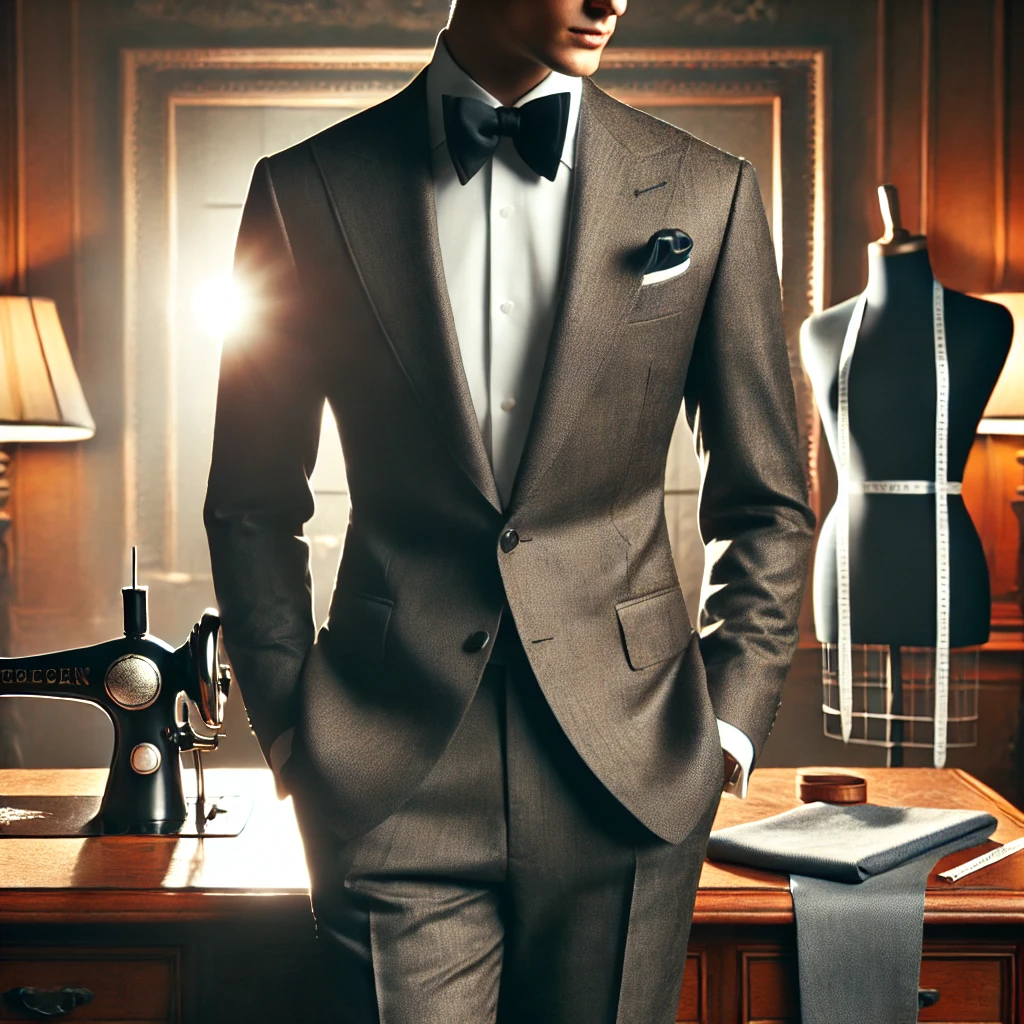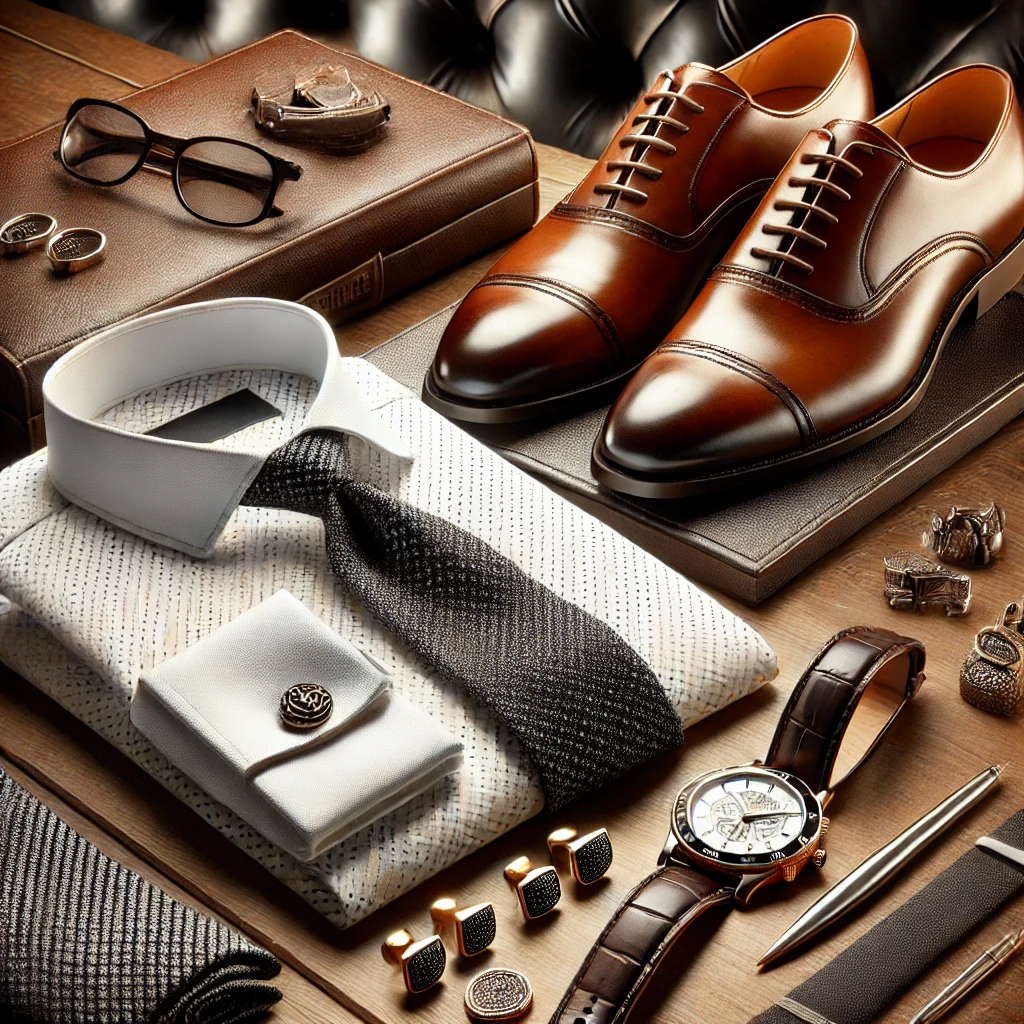In the realm of men’s fashion, few things command as much respect and admiration as formal attire. Whether it’s a black-tie event, a business meeting, or a wedding, understanding the intricacies of formal dressing can elevate a man’s appearance and set him apart in any gathering. Dressing well is more than just putting on a suit; it’s about understanding the nuances of fabrics, cuts, accessories, and how each piece comes together to create a polished, sophisticated look.
This comprehensive guide will walk you through the key elements of formal dress for men, offering insights into everything from choosing the perfect suit to selecting the right accessories. Let’s delve into the world of men’s formal wear and break down what makes it timeless and elegant.
The Foundation: The Suit
The backbone of formal dressing for men is undoubtedly the suit. It’s the one item of clothing that truly defines formal attire, and choosing the right one is paramount to looking your best.
1. Single-Breasted vs. Double-Breasted Suits
Single-Breasted Suits: This is the most common type of suit jacket, featuring one column of buttons. It is versatile and suitable for most formal occasions, from business meetings to weddings. Its clean and streamlined look makes it a timeless choice.
Double-Breasted Suits: A more formal and classic choice, double-breasted suits have two parallel columns of buttons and a more structured appearance. They evoke a sense of power and authority and are often seen in business and black-tie events. Double-breasted suits are typically more fitted and exude an old-school charm that modern suits sometimes lack.
Which to choose? For most men, a single-breasted suit is a safe and versatile option that works across various settings. Double-breasted suits, while stylish, can be more restrictive in terms of occasion and body type, often looking best on taller or more muscular frames.
2. Fabric Choices
The fabric of a suit dictates not only its appearance but also how comfortable it is to wear and how it drapes on the body. The most common fabrics for formal suits include:
Wool: Wool is the most common and versatile fabric for formal suits. It is breathable, durable, and suitable for year-round wear. A high-quality wool suit will maintain its shape and appearance for years.
Tweed: Heavier and more textured than wool, tweed suits are ideal for colder climates and have a rustic, traditional appeal. While not suitable for every formal occasion, tweed is great for outdoor weddings or winter formal events.
Linen: Ideal for summer or warm-weather events, linen is light and breathable. However, linen wrinkles easily, so it requires careful maintenance to avoid looking unkempt.
Silk: Silk suits are rare and often reserved for the most luxurious or fashion-forward formal occasions. They have a distinct sheen and are typically found in black-tie events or extravagant settings.
Recommendation: A high-quality wool suit is the best investment for most men. It balances comfort, durability, and style, making it appropriate for a wide range of formal events.
The Fit: Tailoring is Everything

No matter how expensive or well-crafted a suit is, if it doesn’t fit properly, it won’t look good. Here are key areas to focus on to ensure your suit fits perfectly:
1. Shoulders: The shoulder seams should sit directly on the edges of your shoulders. If the seam is too far off your shoulder, the suit will look too big; if it’s too tight, it will restrict movement.
2. Chest and Waist: The suit jacket should button comfortably without pulling or creating an “X” shape around the buttons. You should be able to place a fist inside the jacket without feeling tightness.
3. Sleeve Length: The sleeves of your jacket should end where your wrist meets your hand, with about half an inch of your shirt cuff visible.
4. Trouser Length: The trousers should have a slight break (a small crease) at the top of your shoes. Too long, and they will bunch up at your ankles; too short, and you risk looking awkward.
Tip: Tailoring is non-negotiable. Even the most expensive off-the-rack suit will likely need adjustments, so always plan for a trip to the tailor.
Formal Dress Codes: What They Mean
Not all formal events are created equal, and understanding the difference between dress codes is crucial in choosing the right attire.
1. Black Tie
The most formal of dress codes (excluding white tie), black tie events require men to wear a tuxedo. This includes:
A black tuxedo jacket and trousers
A formal white dress shirt
A black bow tie (often made of silk or satin)
Patent leather shoes or highly polished Oxfords
Cummerbund or waistcoat (optional but adds a refined touch)
Tuxedos differ from suits in that they usually feature satin or silk lapels and stripes down the sides of the trousers. The black tie dress code leaves little room for deviation; stick to classic, timeless elements to avoid fashion missteps.
2. Business Formal
This is the standard attire for high-level business meetings or professional gatherings. A traditional business formal look includes:
A dark suit (navy, charcoal, or black)
A white or light blue dress shirt
A conservative silk tie (avoid loud patterns or bold colors)
Leather Oxford or derby shoes
Business formal is less rigid than black tie but still requires a sharp, professional appearance. Accessories should be kept to a minimum, and the overall look should be polished and understated.
3. Cocktail Attire
Cocktail attire falls somewhere between semi-formal and formal. It is usually requested for evening events like weddings, galas, or receptions. The goal is to look stylish while maintaining a sense of formality. A typical cocktail outfit includes:
A dark suit (preferably charcoal, navy, or dark grey)
A dress shirt (white or pale colors work best)
A tie (optional but recommended)
Leather dress shoes (Oxfords or brogues)
This dress code allows for some creativity, so feel free to experiment with accessories like pocket squares, cufflinks, or ties with subtle patterns.
The Finishing Touches: Shirts, Shoes, and Accessories

The devil is in the details, and nowhere is this more true than in formal dressing. It’s the little things—like your shirt, shoes, and accessories—that can take your look from good to great.
1. Shirts
For formal occasions, the shirt you wear under your suit is as important as the suit itself. White is the most classic and versatile choice, but light blue and subtle patterns like checks or stripes can also be appropriate, depending on the event. Make sure the shirt is well-fitted, with no excess fabric bunching up around the chest or waist.
Collars: Stick with classic point or spread collars. Button-down collars are too casual for formal events.
2. Shoes
The most formal shoes for men are Oxfords, followed by Derbys and Monk Straps. When choosing formal shoes, go for high-quality leather and ensure they are polished and in good condition. For black-tie events, patent leather Oxfords are the gold standard.
3. Ties and Pocket Squares
A well-chosen tie can elevate a formal outfit, while a pocket square adds a subtle touch of elegance. Stick to silk ties for formal occasions, and avoid anything too flashy or loud. When it comes to pocket squares, a white silk square is the classic choice, though you can opt for more subtle colors depending on your suit.
4. Cufflinks
Cufflinks are an often-overlooked accessory, but they can add a level of sophistication to your outfit. Choose classic designs in silver or gold, and avoid novelty or overly elaborate designs unless the event is more relaxed.
5. Watches
For formal occasions, opt for a slim dress watch with a leather strap. Avoid bulky sports watches or digital watches, as they clash with the elegance of formal attire.
Grooming and Personal Presentation
No formal outfit is complete without proper grooming. A well-tailored suit will only take you so far if your hair, nails, and overall hygiene aren’t up to par.
Hair: Ensure your haircut is fresh and neat. Avoid over-the-top styling, but do make sure your hair is controlled and well-groomed.
Facial Hair: If you have facial hair, ensure it’s neatly trimmed and styled. Clean-shaven faces are always in style for formal events, but a well-groomed beard can look just as polished.
Nails: Make sure your nails are trimmed and clean. It’s a small detail, but it matters.
Conclusion: The Importance of Confidence
Formal dressing is as much about confidence as it is about the clothes you wear. No matter how well-dressed you are, if you don’t feel comfortable in your outfit, it will show. Understanding the elements of formal wear, from choosing the right suit to selecting the perfect accessories, is the first step in mastering the art of formal dressing. But ultimately, it’s how you carry yourself that will make the biggest impact.
So next time you’re preparing for a formal event, take the time to get it right—tailor your suit, polish your shoes, and choose accessories wisely. When you look the part, you’ll feel it too, and that’s what truly sets a well-dressed man apart from the rest.

